Taktsang Monastery, also known as the Tiger’s Nest, is one of Bhutan’s most iconic landmarks, perched precariously on the edge of a cliff 900 metres above the Paro Valley. This sacred site is deeply rooted in Bhutanese culture and spirituality and is believed to be the meditation site of Guru Padmasambhava in the 8th century. The monastery’s serene setting and breathtaking views make it a must-visit destination for those seeking spiritual solace and an immersive cultural experience in Bhutan. Whether you’re a seasoned trekker or a history enthusiast, Taktsang Monastery offers a unique journey into Bhutan’s mystical heritage.
Taktsang Monastery Location
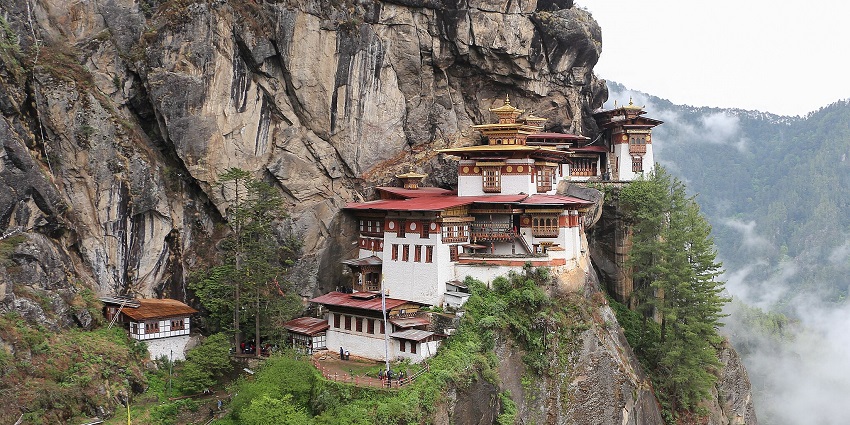
Photo: Bernard Gagnon / Wikimedia Commons
Taktsang Monastery is located in the Paro district of Bhutan, high up on a cliff overlooking the Paro Valley. The monastery’s stunning location amidst the Himalayan mountains makes it one of Bhutan’s most photographed and visited sites.
Suggested Read: Discover The Top Things To Do In Bhutan
How To Reach Taktsang Monastery
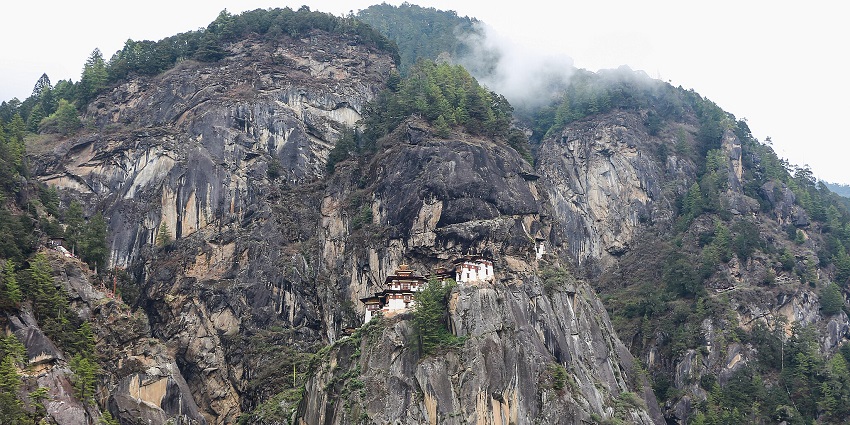
Photo: Bernard Gagnon / Wikimedia Commons
Reaching Taktsang Monastery involves a combination of air travel, road transport, and a trek:
By Air: The nearest airport is Paro International Airport, the only international airport in Bhutan, located about 10 km from the base of the monastery. Direct flights are available from major cities like Delhi, Bangkok, and Kathmandu.
By Road: From Paro, you can hire a taxi or take a private car to the trailhead at the base of the mountain. The drive takes about 20-30 minutes.
By Trek: The final stretch to Taktsang Monastery is a 3-4 hour trek up the mountain. The trek is moderately challenging, with well-marked trails and several rest stops, including a viewpoint offering stunning views of the monastery. The Tiger’s Nest Monastery hike is a popular activity among visitors seeking both spiritual and physical challenges.
Places To Visit Around Tiger’s Nest Monastery
1. Paro Dzong
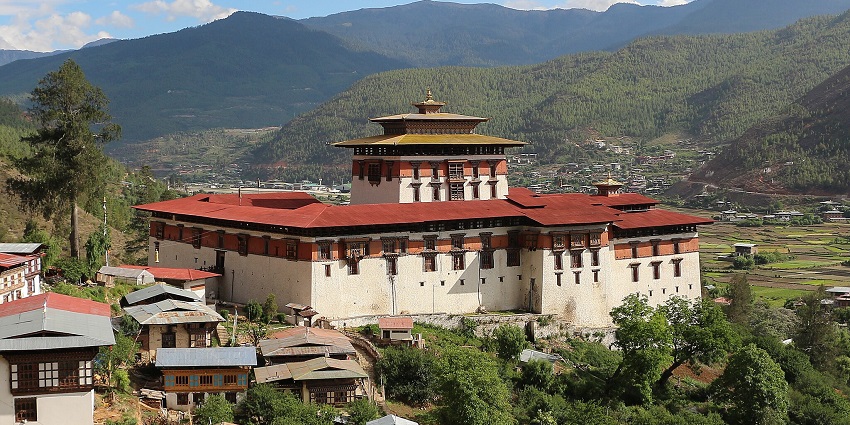
Photo: Bernard Gagnon / Wikimedia Commons
Paro Dzong, also known as Rinpung Dzong, is a majestic fortress monastery located in the Paro Valley. Built in the 17th century, it serves as the administrative and religious centre of the district. The dzong’s impressive architecture, with its towering walls and intricate woodwork, reflects the grandeur of Bhutanese design. Inside, visitors can explore various chapels, shrines, and courtyards, each steeped in history and spirituality. The annual Paro Tsechu festival, held here, is one of the most vibrant cultural events in Bhutan, attracting locals and tourists alike.
Timings: 9 AM – 5 PM
Entry Fee: Free for locals, approximately BTN 500 (INR 500) for foreigners
Suggested Read: Places To Visit In Paro
2. Kyichu Lhakhang
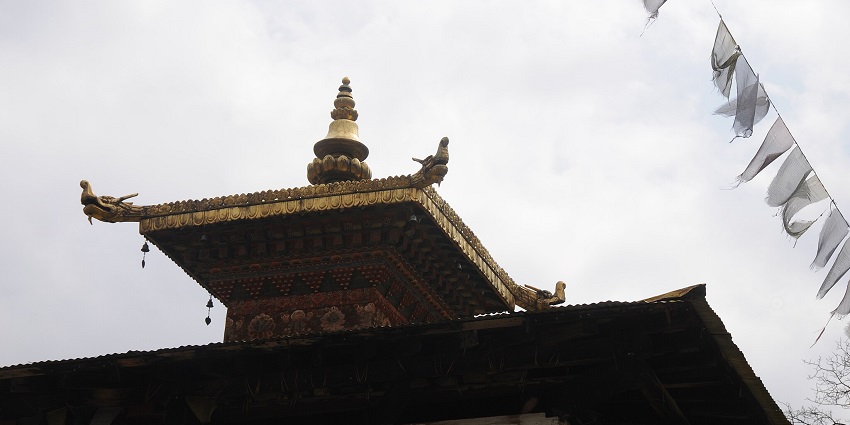
Photo: David Broad / Wikimedia Commons
Kyichu Lhakhang is one of Bhutan’s oldest and most sacred temples, believed to have been built in the 7th century by Tibetan King Songtsen Gampo. This ancient temple, located near Paro, is revered for its spiritual significance and is considered a symbol of the introduction of Buddhism to Bhutan. The temple complex is home to a statue of Jowo Sakyamuni, revered as one of the holiest images in Bhutan. The serene atmosphere and the historical significance of Kyichu Lhakhang make it a popular pilgrimage site for both locals and tourists.
Timings: 7 AM – 6 PM
Entry Fee: BTN 300 (INR 300) per person
3. National Museum Of Bhutan
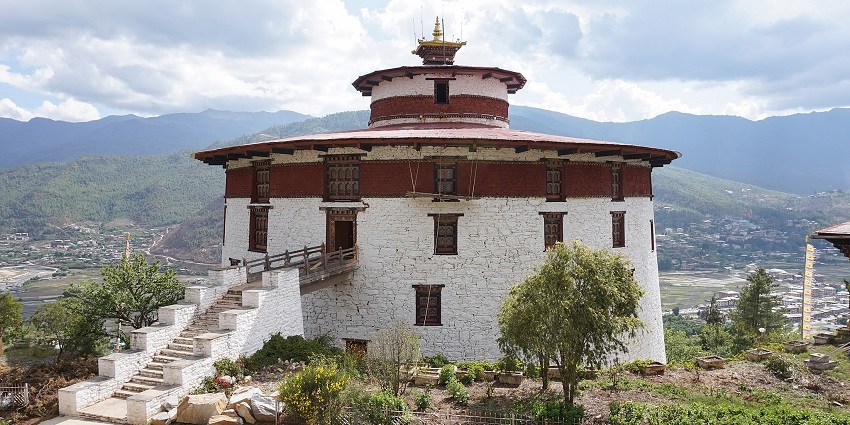
Photo: Bernard Gagnon / Wikimedia Commons
Housed in the Ta Dzong, a 17th-century watchtower overlooking the Paro Valley, the National Museum of Bhutan offers a comprehensive insight into Bhutan’s rich cultural heritage. The museum’s exhibits include ancient thangkas (Buddhist paintings), religious relics, traditional weapons, and artefacts that tell the story of Bhutan’s history and spiritual traditions. The unique architecture of the museum, combined with its extensive collection, makes it an essential stop for those interested in understanding Bhutan’s cultural evolution.
Timings: 9 AM – 5 PM
Entry Fee: BTN 500 (INR 500) per person
Suggested Read: Discover The Top Places To Visit In Bhutan
4. Drukgyel Dzong
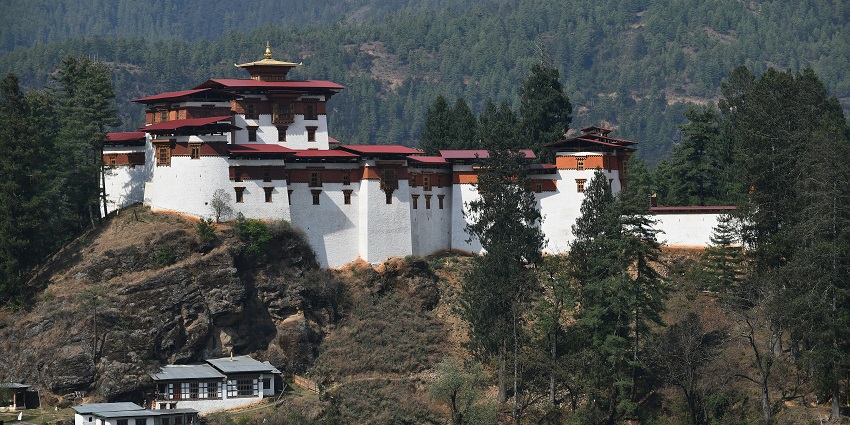
Photo: Christopher J. Fynn / Wikimedia Commons
Drukgyel Dzong, located about 14 km from Paro, is a historic fortress that played a significant role in defending Bhutan from Tibetan invasions in the 17th century. Although much of the dzong was destroyed by fire in the 1950s, the ruins still stand as a powerful symbol of Bhutan’s resilience and independence. Restoration efforts are ongoing, and visitors can explore the site to get a glimpse into Bhutan’s military history. The dzong also offers stunning views of Mount Jomolhari, one of Bhutan’s highest peaks.
Timings: 9 AM – 4 PM
Entry Fee: Free
5. Chele La Pass

Photo: Vinayaraj / Wikimedia Commons
Chele La Pass, standing at an altitude of 3,988 metres, is one of the highest motorable passes in Bhutan. Located about 35 km from Paro, the pass offers breathtaking panoramic views of the Himalayan range, including Mount Jomolhari. The area is also known for its diverse flora, including colourful prayer flags fluttering in the wind, which add to the spiritual atmosphere of the pass. Visitors often stop here to take in the views and enjoy the tranquil surroundings before continuing their journey through Bhutan.
Timings: Accessible all-day
Entry Fee: Free
Suggested Read: Best Valleys In Bhutan That Will Take Your Breath Away
Where To Stay
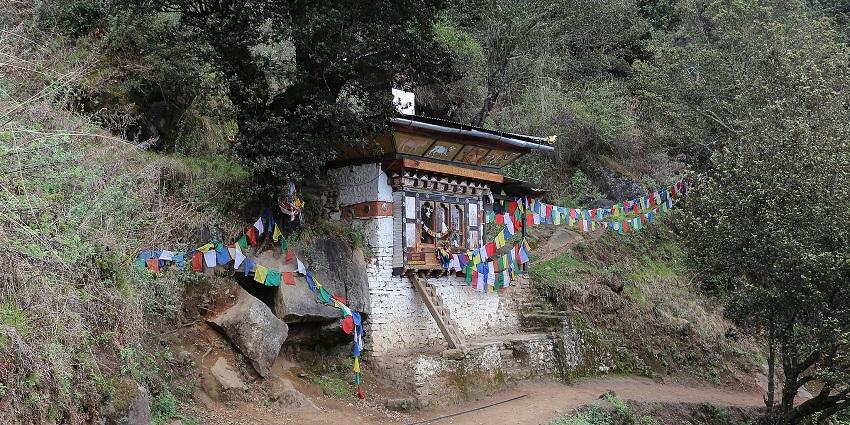
Photo: Bernard Gagnon / Wikimedia Commons
Several accommodation options near Taktsang Monastery cater to different budgets. Some recommended places include Zhiwa Ling Heritage, a luxury resort offering traditional Bhutanese architecture with modern amenities; Hotel Olathang, known for its comfortable rooms and proximity to the Paro Valley; and Paro Village Lodge, which provides a more rustic experience with beautiful views of the surrounding mountains. Booking in advance is advisable, especially during peak tourist seasons, to ensure availability and to choose accommodations that best suit your needs.
Where To Eat
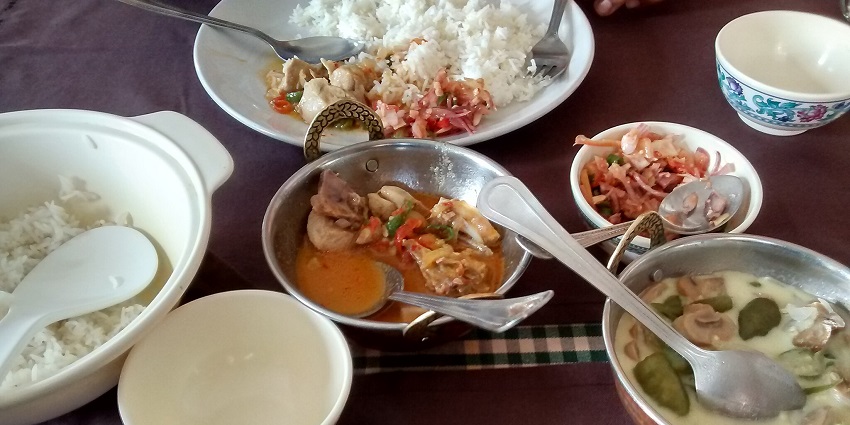
Photo: Arun Sekhar / Wikimedia Commons
For dining near Taktsang Monastery, options include traditional Bhutanese restaurants like Sonam Trophel Restaurant, which serves authentic Bhutanese dishes such as Ema Datshi (chilli cheese) and Jasha Maru (spicy chicken). Another popular choice is the Mountain Café in Paro, offering a mix of local and international cuisines in a cosy setting. For a unique experience, you can also enjoy a meal at the cafeteria located midway along the trek to Taktsang Monastery, where you can rest and take in the stunning views while sampling Bhutanese tea and snacks. The Tiger Monastery Bhutan area is also known for offering some delightful local delicacies.
Suggested Read: Food In Bhutan
Best Time To Visit Taktsang Monastery
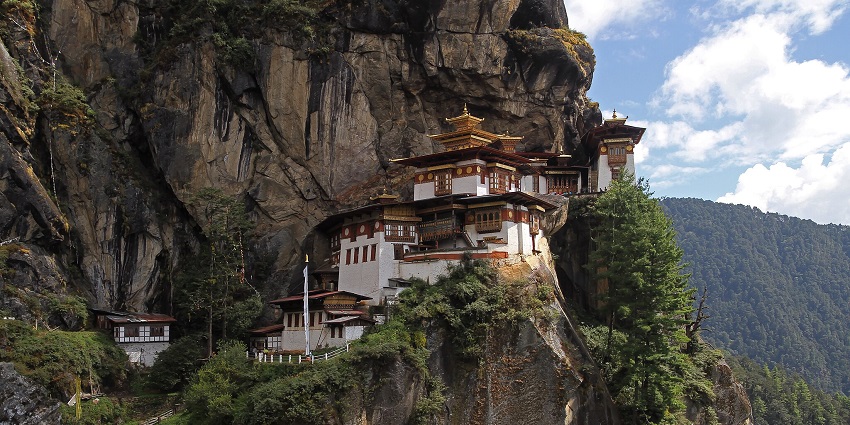
Photo: Gerd Eichmann / Wikimedia Commons
The best time to visit Taktsang Monastery is during the spring (March to May) and autumn (September to November) seasons. During these months, the weather is mild and clear, providing ideal conditions for trekking and enjoying the panoramic views of the Paro Valley and the surrounding Himalayan peaks. The Tiger’s Nest Monastery altitude at approximately 3,120 metres means the climate can vary, so these seasons offer the most pleasant experience.
Other Factors To Consider
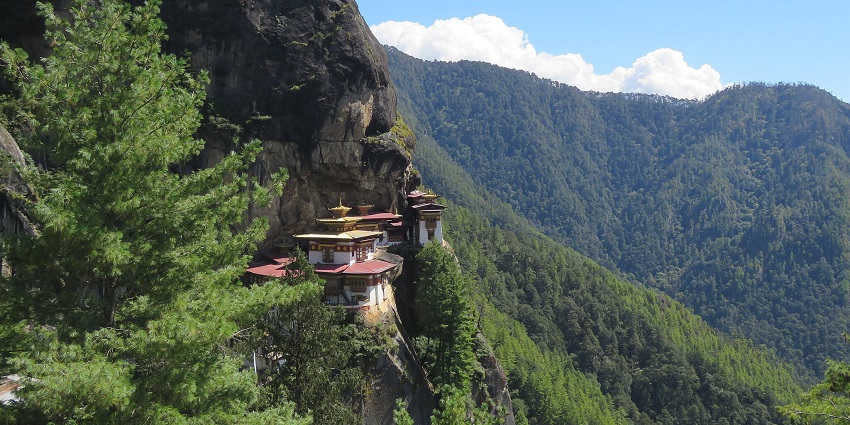
Photo: Vinayaraj / Wikimedia Commons
Average Cost Of The Trip
The cost of a trip to Taktsang Monastery can vary depending on factors like accommodation, dining, and additional activities. On average, a 4-5 day trip to Bhutan, including a visit to Taktsang Monastery, might cost between BTN 50,000 to 80,000 (INR 60,000 to 96,000) per person. This estimate includes accommodation, meals, guided tours, and entrance fees. Travelling during the off-peak season can reduce costs, while opting for luxury accommodations and private tours may increase the overall expense.
Tips For Travellers:
- Wear Comfortable Shoes: The trek to Taktsang Monastery is steep and can be challenging, so it’s essential to wear sturdy and comfortable trekking shoes.
- Hire A Guide: Although the trail is well-marked, hiring a local guide can enrich your experience with insights into the monastery’s history and spiritual significance.
- Carry Water And Snacks: The trek can take 3-4 hours, so it’s advisable to carry enough water and light snacks to keep your energy levels up.
- Respect Local Customs: Taktsang Monastery is a sacred site, so dress modestly and be mindful of local customs and traditions during your visit.
- Start Early: To avoid the crowds and enjoy the tranquillity of the monastery, it’s best to start your trek early in the morning.
Suggested Read: Monasteries In Bhutan Among Its Scenic Vistas
Taktsang Monastery, perched on the cliffs of the Paro Valley, offers a profound spiritual journey into Bhutan’s rich cultural heritage. With its breathtaking location and historical significance, a visit to this sacred site is a must for anyone exploring Bhutan. Ready to embark on this spiritual adventure? Book your Taktsang Monastery tour with TripXL today and immerse yourself in the mystical beauty of Bhutan, guided by experts who ensure a memorable and enriching experience.
Cover Photo: Bernard Gagnon / Wikimedia Commons


 WhatsApp
WhatsApp
 Twitter
Twitter









